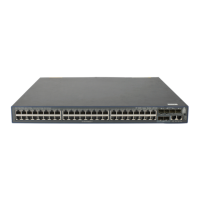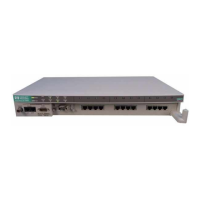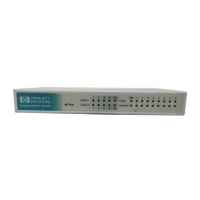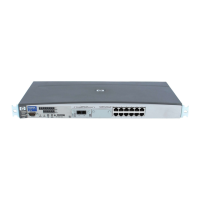297
2. Enter BGP IPv4 unicast
address family view,
BGP-VPN IPv4 unicast
address family view, or BGP
IPv4 multicast address family
view.
• Enter BGP IPv4 unicast
address family view:
a. bgp as-number
[ instance
instance-name ]
b. address-family ipv4
[ unicast ]
• Enter BGP-VPN IPv4 unicast
address family view:
c. bgp as-number
[ instance
instance-name ]
d. ip vpn-instance
vpn-instance-name
e. address-family ipv4
[ unicast ]
• Enter BGP IPv4 multicast
address family view:
f. bgp as-number
[ instance
instance-name ]
g. address-family ipv4
N/A
3. Configure the router as a
route reflector and specify a
peer or peer group as its
client.
peer
{ group-name | ipv4-address
[ mask-length ] }
reflect-client
By default, no route reflector or
client is configured.
4. Enable route reflection
between clients.
reflect between-clients
By default, route reflection
between clients is enabled.
5. (Optional.) Configure the
cluster ID of the route
reflector.
reflector cluster-id
{ cluster-id |
ipv4-address }
By default, a route reflector uses
its own router ID as the cluster ID.
To configure a BGP route reflector (IPv6 unicast/multicast address family):
1. Enter system view.
N/A

